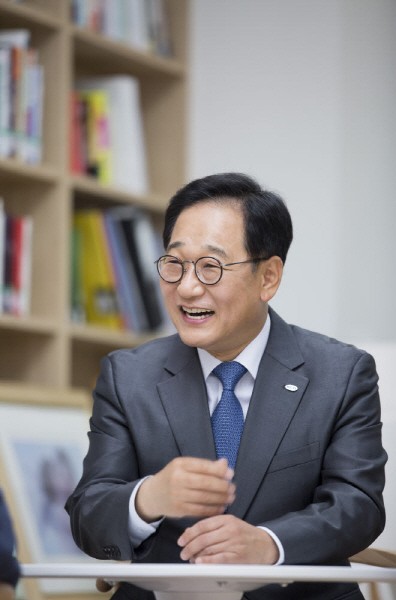
“The competitiveness of Korea Electronics Technology Institute (KETI) isinnovate DNA that does not settle for currentsituation. We had no choice but to think about constant growth strategies for survival. The result of focusing on technology development for commercialization rather than R&D for research has established KETI as a global research institute.”
The rise of KETI is unique. KETI is a specialized production technology research institute under the Ministry of Trade, Industryand Energy and the only private research institute in Korea. In 1991, 78 small, medium and large-sized companies in the electronics field participated to establish KETI. This is the reason why KETI President Young-sam Kim emphasizes 'innovative DNA’. Since there is no external support for the operation of the institution, it has been honed in and grown by itself. Just as a company seeks a way to live through constant innovation, KETI has also emerged as a top-level research center among specialized production technology research institutes through the development and commercialization of innovative technologies. President Kim said, “As of last year, the size of the project was 200 billion won and ranked 7th among public research institutes in the budget section. We have become who we are with continuous achievements of technology transfer and commercialization.”
However, survival is not the core mission of KETI. KETI's mission is to support technology innovation of SMEs and to drive commercialization. It supports so that domestic companies can raise the competitiveness of its own electronics industry and companies. President Kim emphasized this as a “companionship”. It means that the companionship with domestic electronics/IT industry have led KETI for 30 years.
“By operating the corporate cooperation platform on-and-offline, KETI has laid the foundation for mutual growth with SMEs through joint technology development, technology transfer, commercialization, and business incubation. Through strategic business agreements with financial institutions, KETI also has succeeded in attracting investment by discovering promising companies among the companies resident in the institute’s incubation center.”
As a partner of SMEs, KETI has been able to contribute to the creation of a healthy ecosystem in Korea's electronics and IT industry with its continuous technological development.
KETI developed the first GSM-type mobile phone terminal in Korea and helped Korean companies export overseas.
By developing the world's first chipset for HDTV receivers, it also laid the foundation for exporting HDTVs to the US.
President Kim said, “Now, we are accelerating the development of advanced technologies in future industries such as metaverse, artificial intelligence, and autonomous driving. We also developed untact (no-contact) technologies that are spreading recently, such as ultra-realistic four-dimensional (4D) restoration technology and realistic educational content technology.”
President Kim believes that these innovative technologies are the driving force that will lead KETI for next 30 years. When President Kim took office, he made the goal of making KETI an 'innovation maker,’ and the goal is still valid. KETI is also striving to create a business environment to leap forward into a leading institution in innovative technology. President Kim said, “I hope that KETI will contribute to society through strategic technology development and become a future leading research institute that assists national prosperity. KETI will strengthen creative and convergence-type R&D capabilities based on industrial demand in order to soar to the world withits technology.”
By Staff Reporter Dong-jun Kwon (djkwon@etnews.com)